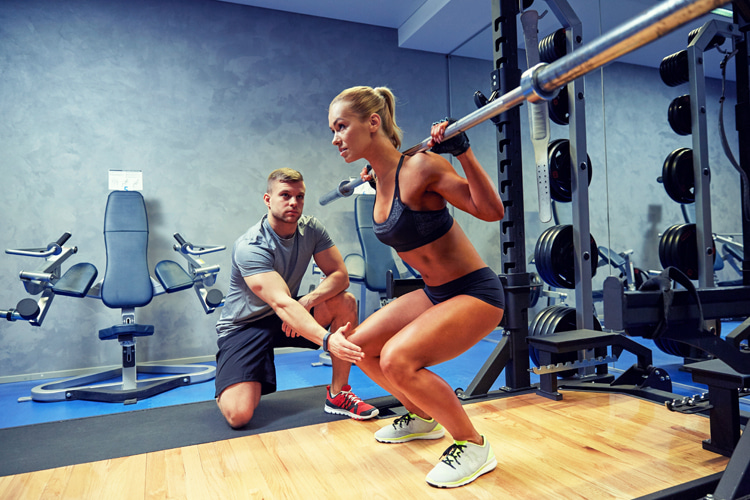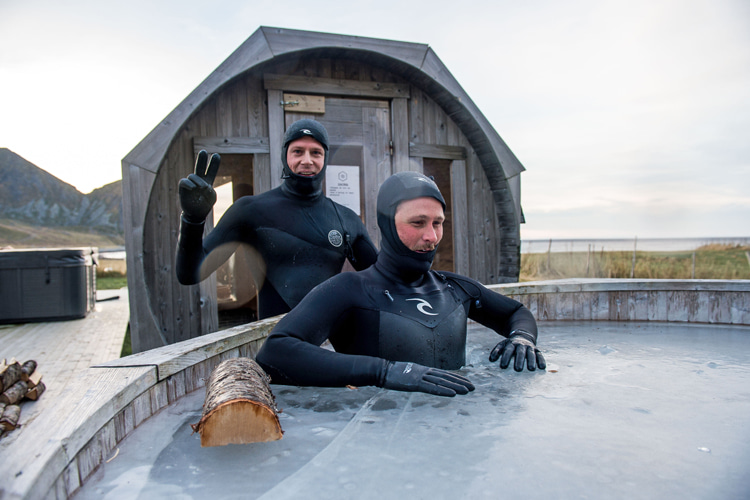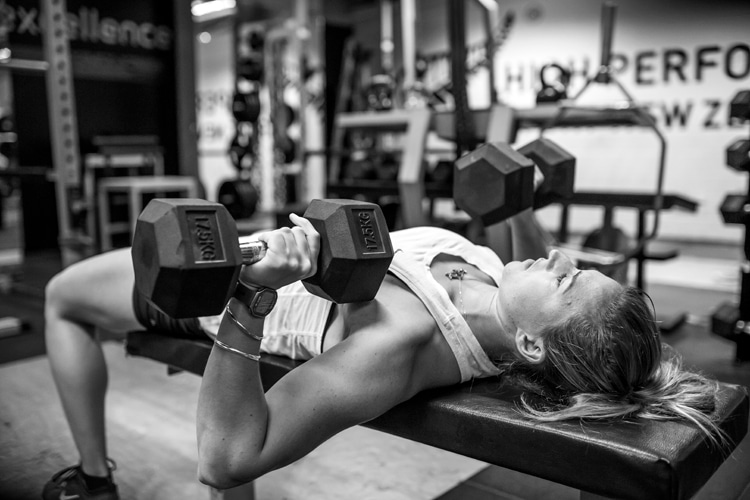Ice baths and cryotherapy are increasingly popular among athletes and active gym enthusiasts. They use cold water therapy after exercise as a method to speed up recovery and improve performance.
Whether you want to gain muscle, run fast, or work out hard, when it comes to any athletic progress, you need to do two things to progress.
You need to stimulate your body through training, and you must then recover from that training.
The relationship and balance between these two variables are complicated to fine-tune and achieve.
In an ideal scenario, athletes should find an optimal balance between training and recovery. But that sweet spot is hard to maintain.
In other words, to increase performance even further, they would need to train more and recover faster.
That is why so much research has been done to try to speed up recovery.
Otherwise, a failure to recover fast enough from additional training would just send the athlete back into an overtrained state and create a higher injury risk.

The Quest to Recover Fast
The quest for a speedier recovery has always involved massage, compression outfits, electro-muscular stimulation, and saunas.
The goal of each of these methods is to tackle recovery through inflammation reduction and the consequent soreness athletes get post-exercise.
Cold water immersion is one of the latest trends.
Reducing inflammation by means of cold water immersion has been found to enable athletes to tackle the next activity with greater ease.
One study revealed that it significantly improved the performance of cyclists who had back-to-back races on the same day.
Two groups of trained cyclists raced in two time-trial events in hot and humid temperatures with a short rest in between races.
During the interval, one group was allowed to take a five-minute dip in 57 °F (14 °C) cold water baths.
The first race results showed no significant difference in performance between the two groups, which was expected as the riders were all pretty evenly matched.
However, in the second race, the groups who had taken the five-minute cold water bath during the race period performed significantly better than the control group, which took no additional recovery measures.
The higher-performing cyclists also rated that their perceived level of desertion was lower than the poorer-performing group.
However, these conditions were highly specific and cannot be transposed to typical training days and applied to all sports.

Ice Baths: Effects on the Human Body
The long-term benefits of reducing acute inflammation post-exercise are still raising discussion among the scientific community.
Studies have concluded that consistent and continuous cold water immersion after everyday training has adverse effects.
When our core body temperature rapidly decreases after an ice bath or cryotherapy, cold shock proteins are released.
Cold shock proteins have a dual benefit on the body.
They have muscle-protecting abilities, similar to hibernating animals who are inactive for many months during the winter.
Also, they regulate fat metabolism, which is also the primary fuel source during hibernation.
The effects of cold shock proteins may be beneficial to endurance athletes, especially those who are ketogenic and heavily rely on fat metabolism as a primary fuel source.
The release of these proteins can also be of interest to athletes who are unable to train because of injury, sickness, travel, or any other reason and want to limit muscle wasting.
However, it is important to stress that, for the release of cold shock proteins to occur, there needs to be a minimum of a two-degree Fahrenheit drop in core body temperature.
So, the duration and intensity of the cold exposure need to be sufficient for these benefits to occur.
Melatonin, the sleep hormone, can also help in the production of cold shock proteins, which suggests that cold water immersion may be best timed at night when cortisol is low and melatonin is naturally elevated.
Timing cold water immersion in this way may even improve sleep quality, which can further improve recovery from exercise.

Impact on Anaerobic and Aerobic Sports
Extreme cold exposure increases the size of mitochondria, the engines within muscle tissue responsible for aerobic respiration.
Over time, if this increase in aerobic capacity continues, the muscles' fibers will also shift toward more slow-twitch type I fibers rather than fast-twitch type II counterparts.
This change in muscle fibers matches well with the previously explained regulation in fat metabolism, as type I fibers have the metabolic flexibility to use both glucose and fat as their primary energy sources.
According to research, endurance athletes had performance-enhancing effects from regular cold water immersion, while strength athletes' performances were hampered.
Therefore, athletes who are focused on building strength and aerobic capacity utilizing predominantly type II muscle fibers are better suited to using an active recovery protocol post-workout.
Weight-lifting, American football, wrestling, boxing, rowing, and rugby are a few examples of anaerobic, strength-based sports in which athletes seek to build muscle.
On the other hand, swimming, running, cycling, skateboarding, rollerblading, and jogging are aerobic endurance-based sports in which athletes seek to stabilize blood levels.
But some sports combine anaerobic and aerobic exercise.
Surfing, for instance, simultaneously mixes short bursts of high-intensity exercise and cardiovascular activity.
Big wave surfing pioneer Laird Hamilton was one of the sport's first athletes to embrace and promote ice baths as a recovery therapy.
Cold Water Therapy: Who, When, and How To
Cold water immersion may be useful during multi-event competitions, especially in hot conditions.
Cold exposure improves fat metabolism and increases the development of type I muscle fibers, which is beneficial for aerobically-biased endurance athletes, especially those on a ketogenic diet.
Strength and power athletes or those interested in building the maximum amounts of muscle mass may not benefit from continuous cold exposure, as long-term adaptation, glucose metabolism, and fast-twitch muscle development will get retarded.
During inactivity, such as when an athlete is injured, cold shock proteins released through cold exposure may prevent muscle wasting.
Cold water immersion can improve sleep quality and thus could be a useful nighttime ritual.
In conclusion, and for the average athlete, for cold exposure to be effective, you need to submerge your body up to the neck in water between 50-59 °F (10-15 °C).
The goal is to stay underwater until the core body temperature drops a couple of degrees.
And that should take between five and ten minutes to achieve.
